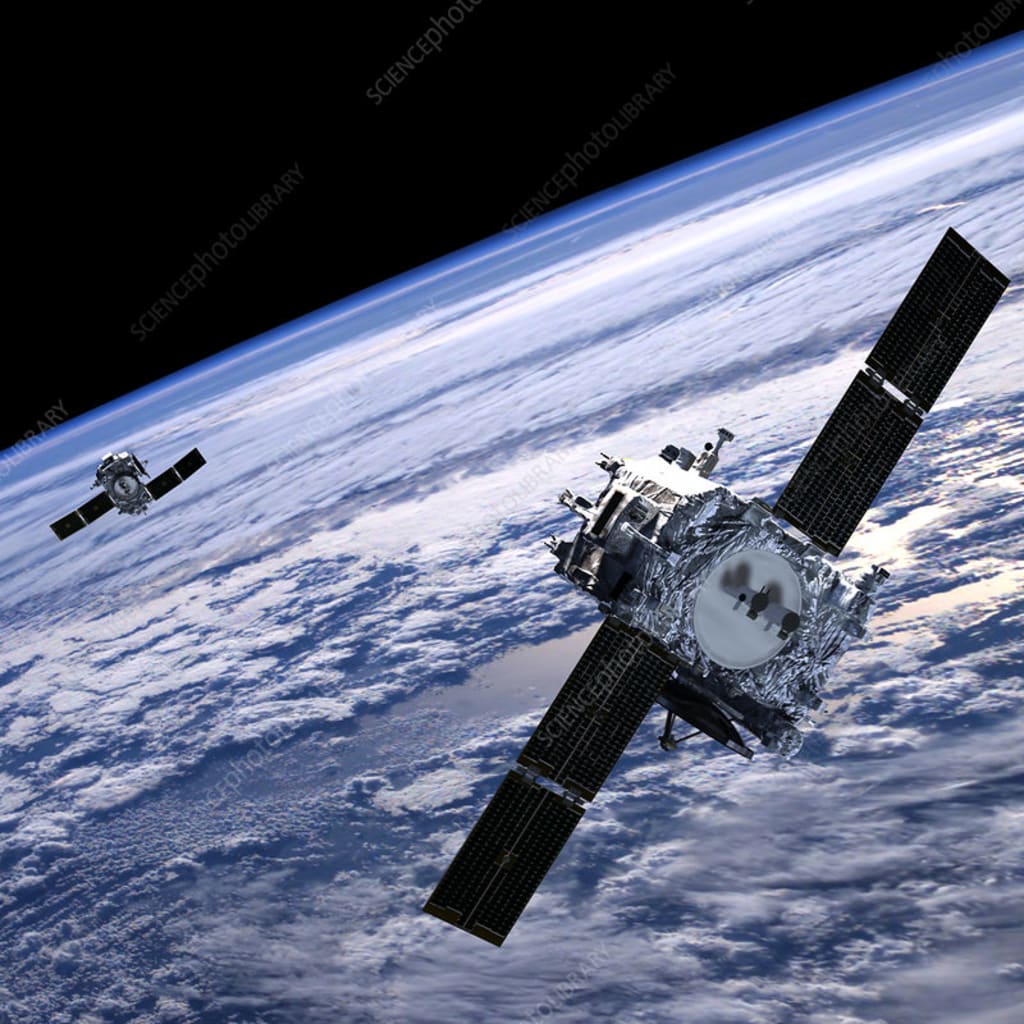
Satellites have become an integral part of our modern world, revolutionizing communication, navigation, weather forecasting, and scientific research. These artificial objects orbiting the Earth have a fascinating history that spans several decades, showcasing the remarkable advancements in technology and our understanding of space.
The concept of a satellite was first proposed by the visionary Russian scientist Konstantin Tsiolkovsky in the late 19th century. He envisioned a spacecraft that could orbit the Earth, providing a platform for scientific research and exploration. However, it wasn't until the mid-20th century that this dream became a reality.
On October 4, 1957, the Soviet Union launched the world's first artificial satellite, Sputnik 1. This small, spherical satellite captured the world's attention and marked the beginning of the Space Age. Sputnik 1 orbited the Earth for three months, transmitting simple radio signals back to Earth. Its launch sparked a space race between the United States and the Soviet Union, as both nations sought to demonstrate their technological prowess and gain a strategic advantage.
In response to the Soviet success, the United States launched its first satellite, Explorer 1, on January 31, 1958. This satellite carried scientific instruments to study cosmic rays and discovered the Van Allen radiation belts, which are regions of charged particles trapped by Earth's magnetic field. Explorer 1 paved the way for future scientific missions and set the stage for the development of more advanced satellites.
Throughout the 1960s and 1970s, both the United States and the Soviet Union launched numerous satellites for various purposes. These satellites were primarily used for communication, weather observation, and military surveillance. The technology continued to evolve, with satellites becoming smaller, more efficient, and capable of transmitting larger amounts of data.
One of the most significant advancements in satellite technology came in the 1980s with the launch of the Global Positioning System (GPS). Developed by the United States Department of Defense, GPS revolutionized navigation by providing accurate positioning and timing information anywhere on Earth. GPS satellites form a constellation in space, constantly transmitting signals that are received by GPS receivers on the ground. This technology has transformed the way we navigate, enabling precise location tracking for vehicles, smartphones, and other devices.
In recent years, the focus has shifted towards satellite constellations, which consist of hundreds or even thousands of small satellites working together to provide global coverage. Companies like SpaceX, OneWeb, and Amazon have ambitious plans to launch massive constellations to provide high-speed internet access to remote areas and improve global connectivity. These constellations are made possible by advancements in miniaturization, allowing for smaller and more affordable satellites to be launched in large numbers.
Satellites also play a crucial role in weather forecasting and monitoring Earth's climate. Weather satellites provide real-time images and data about atmospheric conditions, helping meteorologists predict storms, monitor hurricanes, and track other weather phenomena. Climate satellites, on the other hand, collect data on temperature, sea ice extent, and greenhouse gas concentrations, contributing to our understanding of climate change and its impacts.
In addition to their practical applications, satellites have also been instrumental in advancing our knowledge of the universe. Space telescopes like the Hubble Space Telescope and the Kepler Space Telescope have provided breathtaking images of distant galaxies, discovered exoplanets, and deepened our understanding of the cosmos. These telescopes, orbiting high above Earth's atmosphere, are free from the distortions caused by atmospheric turbulence, allowing for clearer and more detailed observations.
As we look to the future, the role of satellites will only continue to expand. They will play a crucial role in the development of 5G networks, enabling faster and more reliable communication. Satellites will also be essential in monitoring and managing Earth's resources, tracking deforestation, monitoring agricultural productivity, and assessing the health of our oceans.
The history of satellites is a testament to human ingenuity and our relentless pursuit of knowledge and progress. From the humble beginnings of Sputnik 1 to the vast constellations of today, satellites have transformed our world and opened up new frontiers of exploration. As technology continues to advance, we can only imagine the incredible possibilities that lie ahead in the realm of satellite technology.
About the Creator
SATHYA
Start writing...
Enjoyed the story? Support the Creator.
Subscribe for free to receive all their stories in your feed. You could also pledge your support or give them a one-off tip, letting them know you appreciate their work.






Comments
There are no comments for this story
Be the first to respond and start the conversation.